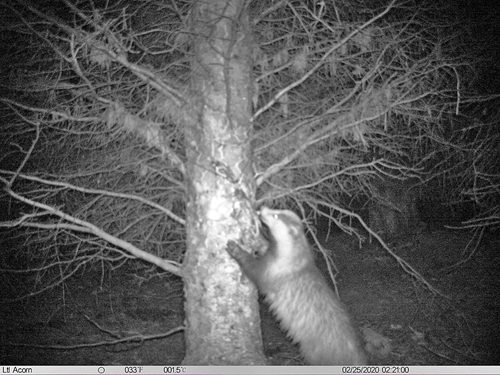
Is culling badgers good for birds and hedgehogs?
By Dr. Jen Brewin, Science Writer
4 minute read
You are probably already aware of the programme of badger culling undertaken across England since 2013 for the purpose of reducing rates of tuberculosis in cattle. The cull was controversial because the prospect of killing wildlife to protect livestock was divisive.
However you view it, though, the cull went ahead, and offered an opportunity for scientists to study the effects of predation by badgers in a way that would not otherwise have been possible. As the cull progressed, scientists studied not only the effect on bovine TB, but also the knock-on impact for other species, including birds and hedgehogs.
The results of one study looking at the possible impact of the badger cull on bird populations were reported a scientific paper earlier this year. They didn’t show any strong, consistent effects but there were some indications of possible weaker effects that merit more investigation, for example on skylark and lapwing – interestingly, despite both being ground-nesting, these effects were in opposite directions, with skylarks seeming to benefit from fewer badgers and lapwing not. The paper is an interesting first look at possible effects from the information that is available so far but does not paint a clear picture of the effect of badgers on bird populations.
Scientists also examined whether evidence from the badger cull areas supported previous suggestions that badgers can also impact another much-loved but recently little-seen species – the hedgehog. Their protective spines are so effective that badgers are one of the only species that can tackle hedgehogs as a food source. The strong paws and claws of a badger allow them to flip a hedgehog onto its back, targeting the soft underside to kill and eat the animal.
Not only this, but as badgers and hedgehogs share some food resources – for example invertebrates such as earthworms – they compete for certain foods. Although badgers and hedgehogs are both native species that have coexisted for millennia, badger predation is one of the main causes of death for hedgehogs, and there is evidence that removing badgers can benefit them.
One study monitored hedgehogs between 2000 and 2005 and found that numbers more than doubled in areas where badgers were culled compared to where they were not. Interestingly, the study found their hedgehogs in “amenity grasslands” – parks, sports grounds and other urban green spaces – and sometimes in fields near to villages, rather than on farmland itself. Pastures were relatively devoid of the old farmers’ friend. Might this be because badgers avoid human disturbance and hedgehogs avoid badgers? Or perhaps modern farmland just no longer caters for the needs of hedgehogs, and gardens are a better bet.
These findings, supported by the reports of badger predation affecting ground-nesting waders and gamebirds which we discussed last week, suggest rising badger numbers may be bad news for some other species; but the consensus in the conservation world is that badger culling to protect hedgehogs is not a sensible approach. Of course, badger predation is far from the only threat to hedgehogs. Pesticides reduce their food supply, traffic threatens their safe passage, and a lack of diversity in the countryside has reduced their habitat.
Nor would such an approach be legal – although a licence for culling badgers may be issued to protect human property, it is not possible to apply for one for conservation, for example to protect nesting curlew. In an ideal world, this makes sense. A countryside with enough habitat and resources should provide adequately for badgers and a wide range of prey species to thrive. However, the reality is that most of our modern farmed environment does not offer that, and the impact we are having on our environment means that the species we share it with are struggling to coexist.
We should be wary of oversimplifying things in our desire to understand and help address complex problems though – for example, although badgers predate both hedgehogs and ground-nesting bird species, hedgehogs can also predate ground-nesting birds. The complicated web of connections in our natural world means it is often difficult to predict the whole range of outcomes from any intervention.
Which brings us to the Allerton Project again – the farm now provides better habitat and resources than there have been for 30 years. We have game cover crops, hedgerows, woodland, very healthy earthworm populations, agroforestry areas, and beetle banks. But although badger numbers are still on the up, hedgehogs are sadly a thing of the past.
Part 1 in this series of blogs can be found here.